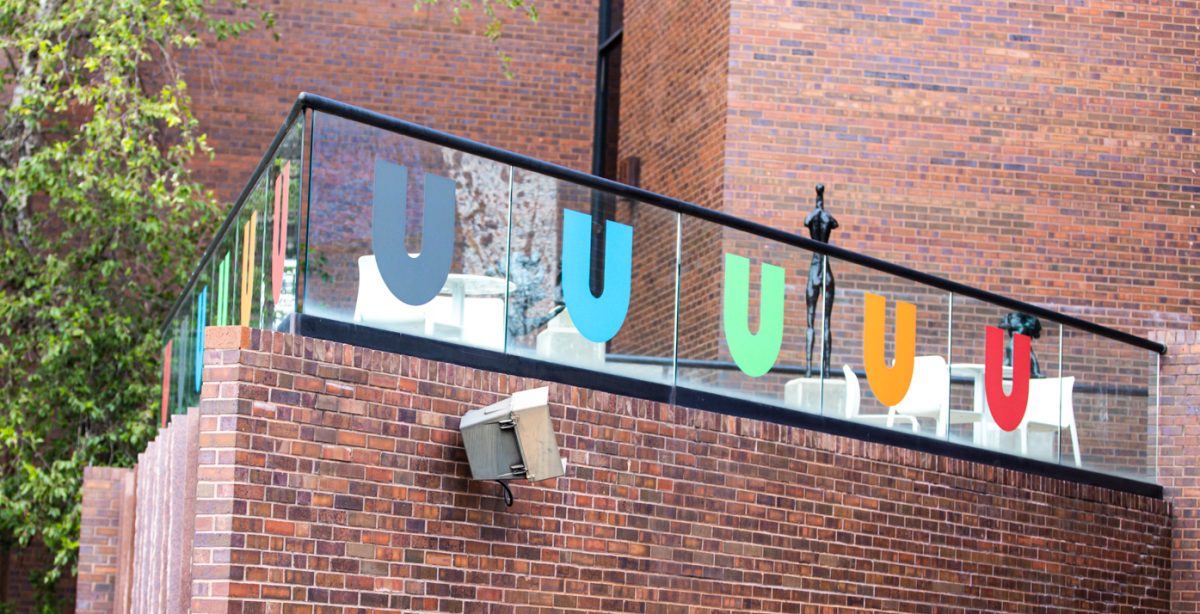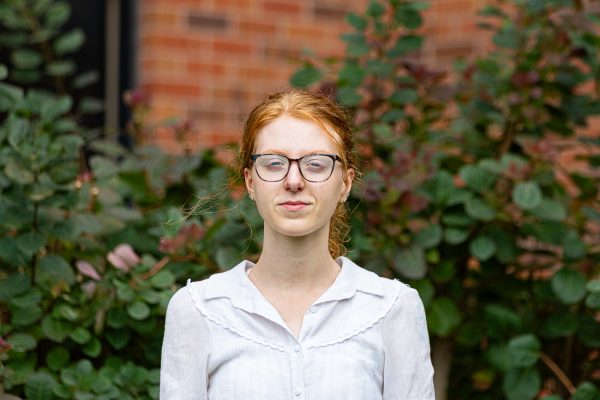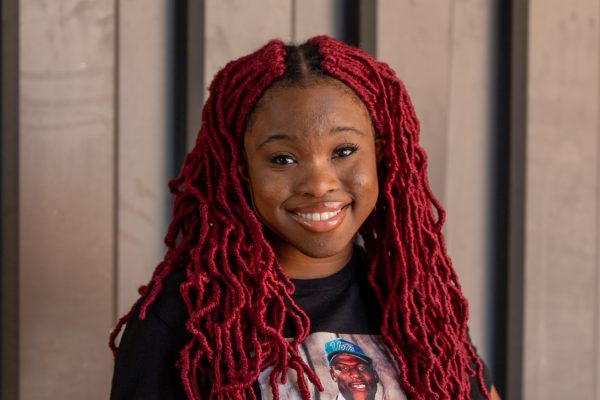“Karaiw a’e wà” or “The Civilized” by Zahy Tentehar is a 15-minute film featuring a single character. The artist, dressed in an outfit reminiscent of a hazmat suit and with her face covered by a plastic mask, is seen in an abandoned industrial building. She walks through deserted rooms and delivers a monologue in her native language.
According to Vivian Zavataro, the executive and creative director for the Ulrich Museum of Art, the language featured in the video is one of several dialects in the Tupi-Guarani family of indigenous languages spoken in parts of South America, including Brazil, where Tentehar lives.
During the video, Tentehar takes off her mask to stare at the camera, her face painted in a red and black design.
The video deals with themes of indigenous identity, colonization and what it means to be “civilized,” according to Ksenya Gurshtein, the Ulrich’s curator of modern and contemporary art.
“I’ve heard people talk about walking in two worlds,” Gurshtein said. “You have the culture that you’re born into, and in her case, that you grow up with, that’s quite different from the more dominant mainstream culture of people who colonized that land at one point.
Gurshtein said that Tentehar questions the way colonization happened in the name of “civilizing the savages.”
“I think she wants us to question a lot of those perceived assumptions of native people as less than civilized because they historically have languages that are only oral or because they didn’t have certain technologies that western colonizers perceived as advanced,” she said.
“The Civilized” is the final piece of “Some Possible Futures,” a three-part series presented at the Ulrich.
“I’m interested in how artists help us envision the future and capture different premonitions that we have as a society about what’s coming,” Gurshtein said.
The curator noted the Ulrich’s spring of 2023 showing, “The Boat People” by Vietnamese-American artist Tuan Andrew Nguyen. In the summer, they showed a project which centered on a video called “In Event of Moon Disaster.”
“The Civilized” was originally commissioned for the Museum of Modern Art in Rio de Janeiro, Brazil, in 2022. It was later shown at the New Museum in New York City. While searching for a third exhibit, Zavataro found Tentehar’s work.
“She was the one who suggested this video as the third installment in this series because it fit topically, and it resonated with our desire to continually engage with contemporary indigenous artists,” Gurshtein said.
Gurshtein stated that despite the artists featured in the collection being multinational, it also resonates locally.
“It was global in scope, and it allowed us to represent really different and diverse voices that at the same time all have collections to Wichita,” she said.
“The Civilized” will be shown at the Ulrich until Dec. 9. Along with the video, the museum is hosting a presentation by writer and curator Rodrigo Moura on Indigenous themes in Brazilian art on Nov. 1.





